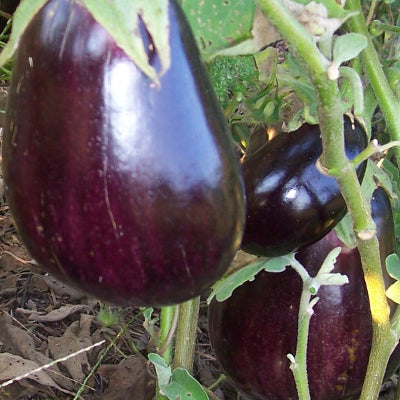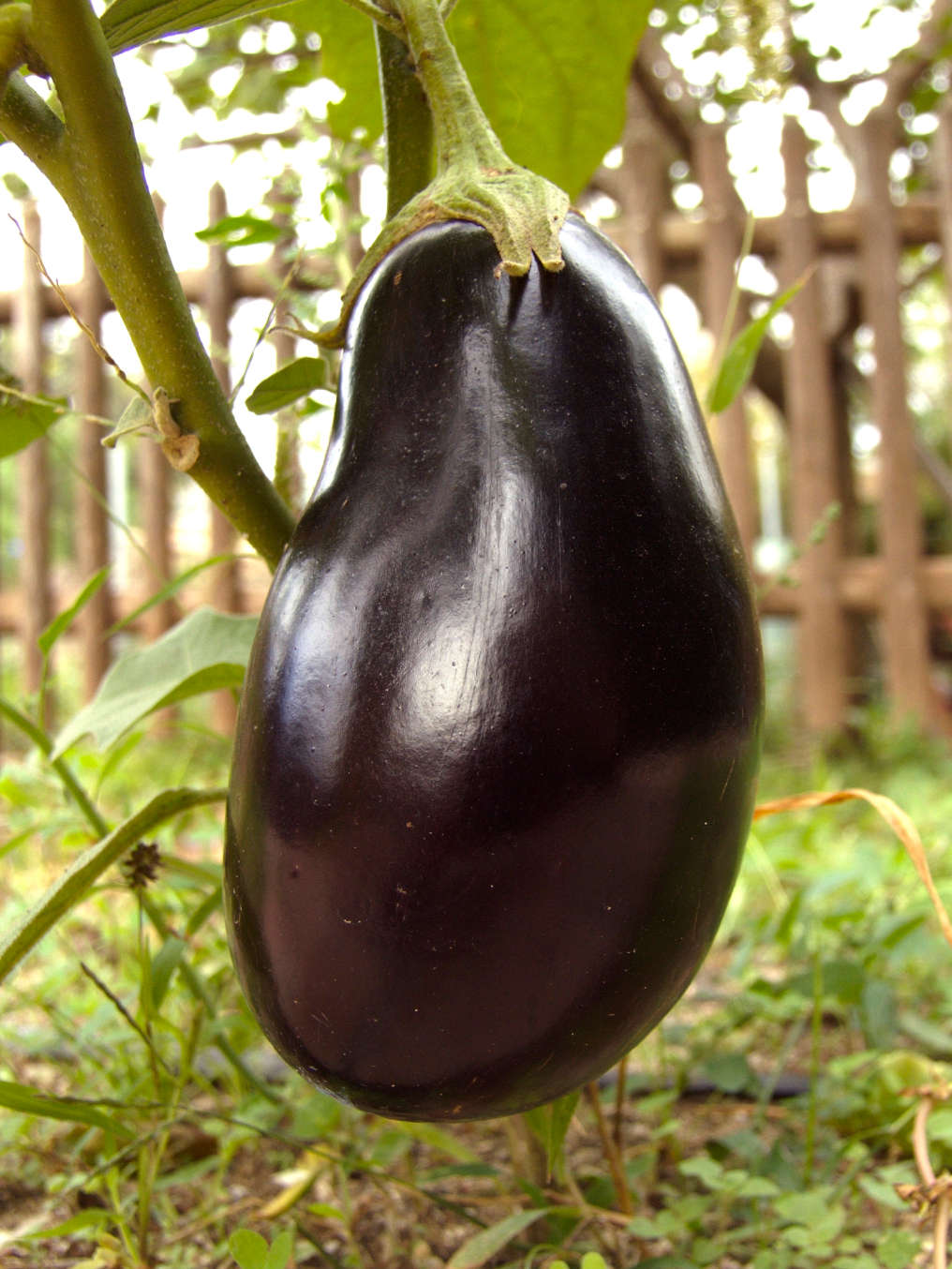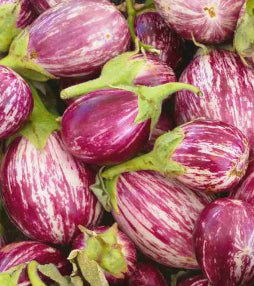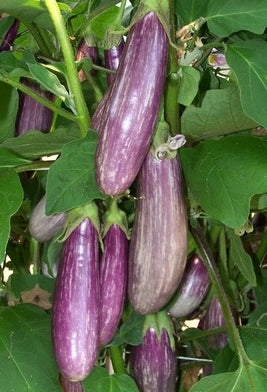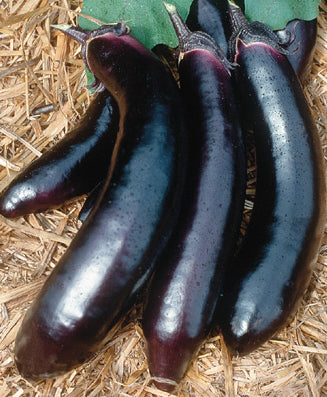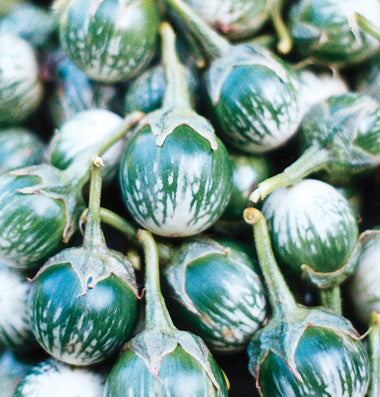How to Grow Eggplants

Meet the Eggplants – Flavour & Kitchen Uses:
- Globe / “Black Beauty” types – firm, mildly sweet, classic deep-purple skin; perfect for grilling, parmigiana, moussaka and hearty stews.
- Italian & striped (e.g. Rosa Bianca, Listada de Gandia) – creamy flesh, very few seeds; superb for baking whole, ratatouille and caponata.
- Asian long (Ichiban, Orient Express) – tender, almost seedless, cooks in minutes; ideal for quick stir-fries, curries and smoky charcoal dishes.
- Mini & baby (Fairy Tale, Calliope) – bite-sized, delicately sweet; great skewered, roasted or pickled whole.
- White & novelty colours – mild, mushroom-like flavour; substitute wherever you would use globe fruit for a striking plate.
Seeds per Gram: ≈ 230 seeds per gram
Optimal Germination: 24 – 32 °C soil; germinates in 7 – 14 days
Feed Requirements:
Heavy feeder. Incorporate 5 cm of compost plus a balanced organic fertiliser before planting, then:
- At transplanting (or 5 – 10 cm tall seedlings) – side-dress with slow-release fertiliser.
- When first flowers open – fortnightly liquid feed (seaweed, fish emulsion or compost tea).
- Mid-season – another light side-dress of nitrogen to keep plants vigorous.
Growing Notes:
Climate & Timing:
- Warm-season crop needing a long growing window. Start seed indoors 8 – 10 weeks before the last frost; transplant only when night temperatures stay above 12 °C.
- Soil must be at least 18 °C for successful establishment; black plastic mulch speeds warming in cool zones.
Sowing & Spacing:
- Direct sowing: possible in frost-free climates; 5 mm deep, 50 – 80 cm between plants, rows 60 – 100 cm apart.
- Transplanting: pot up once second true leaves show; harden off. Plant out at the same spacing, burying the root ball level with soil.
- Allow 1 m² centres per plant if you expect large harvests.
Support & Pruning:
- Stake or cage plants at planting time to prevent wind damage and keep fruit clean.
- Pinch out the main tip above the third flower cluster to encourage sturdy branching on vigorous cultivars.
Watering:
- Keep the top 5 cm of soil evenly moist; deep soak 1 – 2 times per week (more often in light soils) and avoid wetting foliage.
- Mulch after soil reaches 24 °C to conserve moisture and suppress weeds.
Common Problems:
- Flea beetles, aphids & potato beetles – protect young plants with fine insect mesh; use pyrethrin or neem if numbers build.
- Whitefly & thrips – hose off, introduce beneficial insects, apply horticultural oil.
- Blossom-end rot – maintain steady watering and correct soil calcium.
- Verticillium / fusarium wilt – practise 4-year crop rotation, remove infected plants promptly.
- Sunscald – retain leaf canopy in mid-summer or drape shade cloth on extreme days.
- Powdery mildew – improve airflow, remove affected leaves, treat with sulphur or milk spray.
Harvesting:
- Pick when fruit are glossy, firm and spring back when gently pressed.
- Cut with secateurs leaving a 3 cm stem stub; wear gloves to avoid prickles.
- Harvest two- to three-day intervals in peak season to keep plants setting new fruit.
With warmth, rich soil and regular picking, a couple of well-tended eggplants will keep your kitchen supplied with velvety, versatile fruit from midsummer until the first autumn chill. Happy growing!
Sowing Periods
| J | F | M | A | M | J | J | A | S | O | N | D | |
|---|---|---|---|---|---|---|---|---|---|---|---|---|
| Cool | ||||||||||||
| Temperate | ||||||||||||
| Sub-Tropical/Tropical |
Filters
6 products
EGGPLANT ‘Black Beauty’
Sale price$3.75
Eggplant ‘Black Italia’ F1
Sale price$3.75
EGGPLANT ‘Calliope’ F1
Sale price$3.95
EGGPLANT ‘Lavender Blush’ F1
Sale price$3.90
Eggplant ‘Orient Express’ F1
Sale price$3.90
Eggplant ‘Thai Green’ F1
Sale price$3.90

